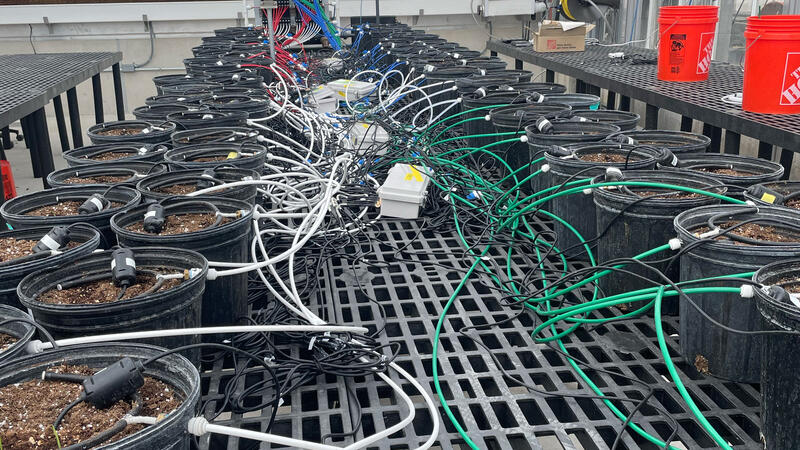News
Sustainable Bioenergy Cropping Systems
Timing is everything: How drought affects switchgrass
Scientists evaluated how switchgrass responded to drought stress at distinct stages of development — vegetative growth, flowering, and when leaves and shoots die off in the fall (senescence) — and the effects on fermentation of plant sugars. The findings suggest that the timing of drought stress has little impact on plant size but does change fermentation rates. Drought during the growing stage can make plants more hardy at the expense of biofuel production, while late-season drought enhances ethanol yields.
A junior from Hartford, Wis., Katarina Aranguiz was one of four University of Wisconsin–Madison students to receive a 2024 Goldwater Scholarship.
Ralph and his collaborators were honored for developing and innovatively applying advanced analytical techniques in ways that enhance understanding of lignin biosynthesis and structure in trees and provide a basis for new ways to deconstruct wood and use lignin.
A senior scientist with the Great Lakes Bioenergy Research Center and Wisconsin Energy Institute, Yaoping Zhang contributed to dozens of frequently-cited papers, though colleagues remember him mostly as a joyful collaborator who sought to support those around him.
UW–Madison scientists have improved a method for making a popular painkiller from plants instead of petrochemicals. The approach could help make plant-based fuels more cost competitive.
The latest spotlight features Emma Boismier, a first year graduate student in the TerAvest Lab within Michigan State University's Biochemistry Department. Boismier was born and raised in Michigan, and earned a bachelor's in genomics and molecular genetics.
University of Wisconsin–Madison faculty have recognized Great Lakes Bioenergy Research Center science director Robert Landick for his contributions to teaching, research, and service.
New research from the University of Wisconsin–Madison decodes the evolutionary pathway of regulatory proteins, the molecules that help control gene expression.
With its streamlined genome, environmental versatility, and a single-minded focus on fermenting sugar into alcohol, Zymomonas mobilis could be a star player in the quest to replace fossil fuels with plant-based alternatives. UW–Madison scientists are working to understand what makes this microbe tick.
With fewer than 2,000 protein-encoding genes, Zymomonas mobilis has fewer than half the genes of its closest relatives, is good at converting sugar into ethanol, and able to thrive with or without oxygen. This combination of simplicity, efficiency, and versatility make Z. mobilis a promising model for understanding biology and a potential industrial workhorse. Yet the genes required for growth in various conditions have not been well studied.
Zymomonas naturally produces ethanol, but with genetic modifications researchers have found ways to trick the microbe into making more valuable products like isobutanol, a form of alcohol that holds more energy and can more easily replace gasoline and jet fuel. There’s one big hurdle, though: While Zymomonas tolerates high levels of ethanol, even a little bit of isobutanol will stunt its growth.





